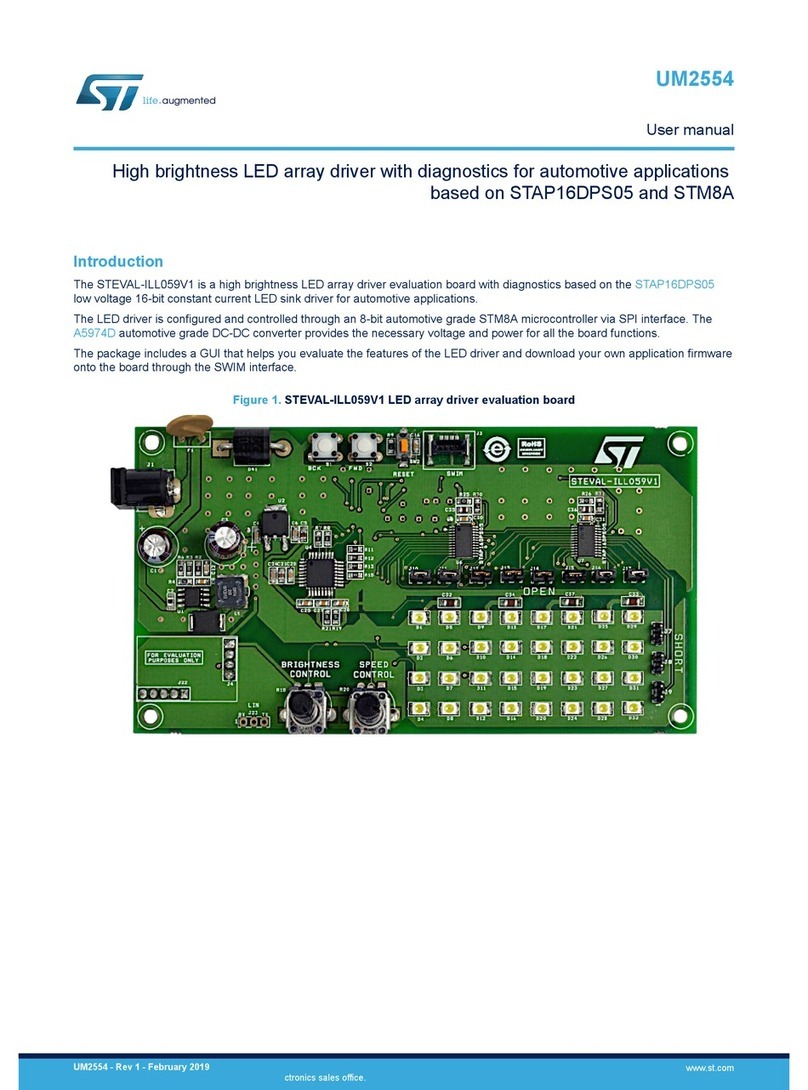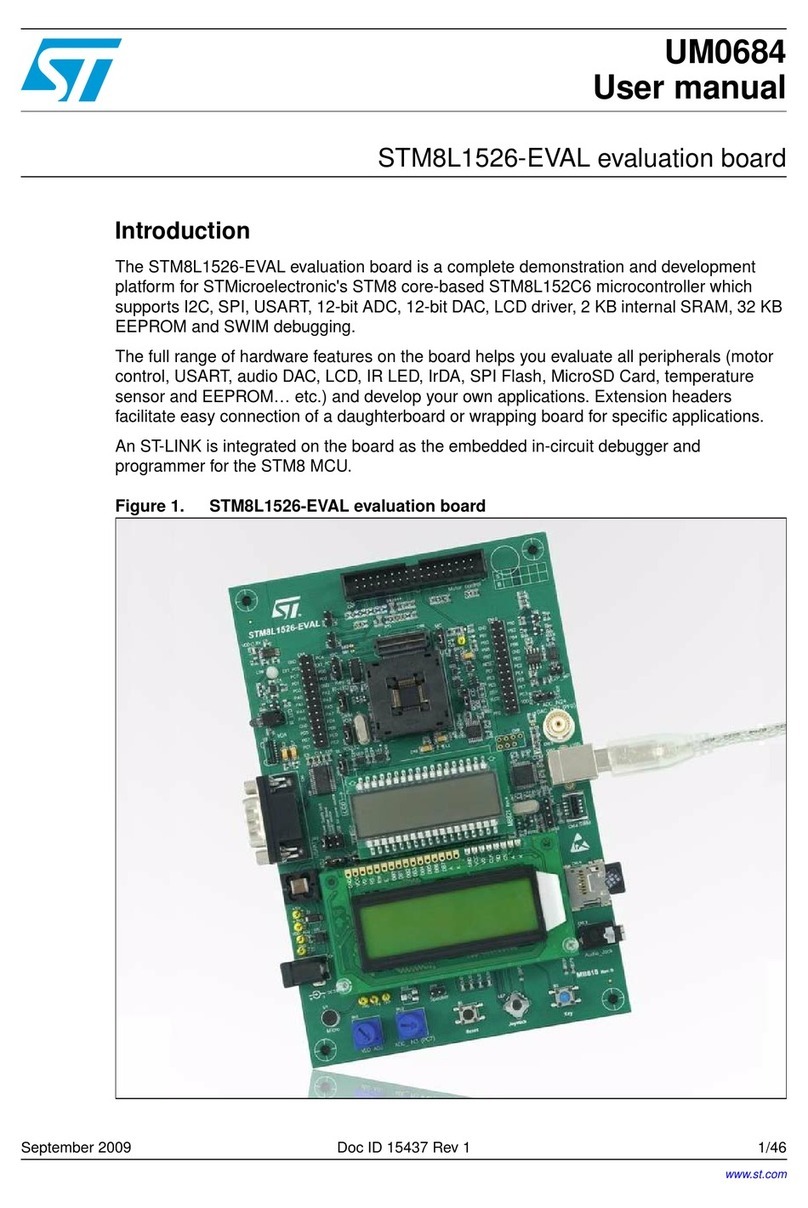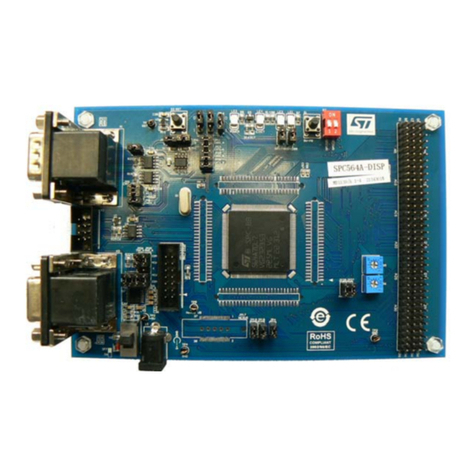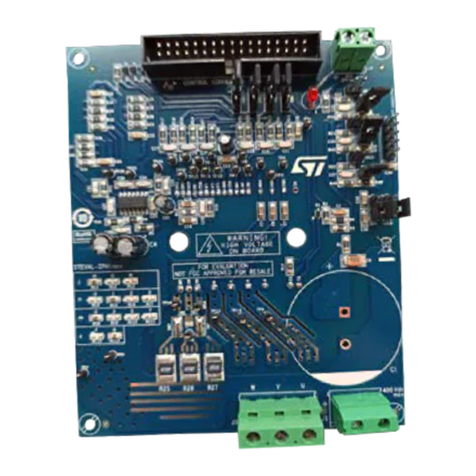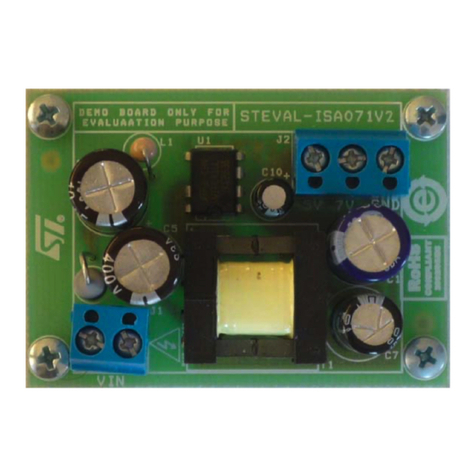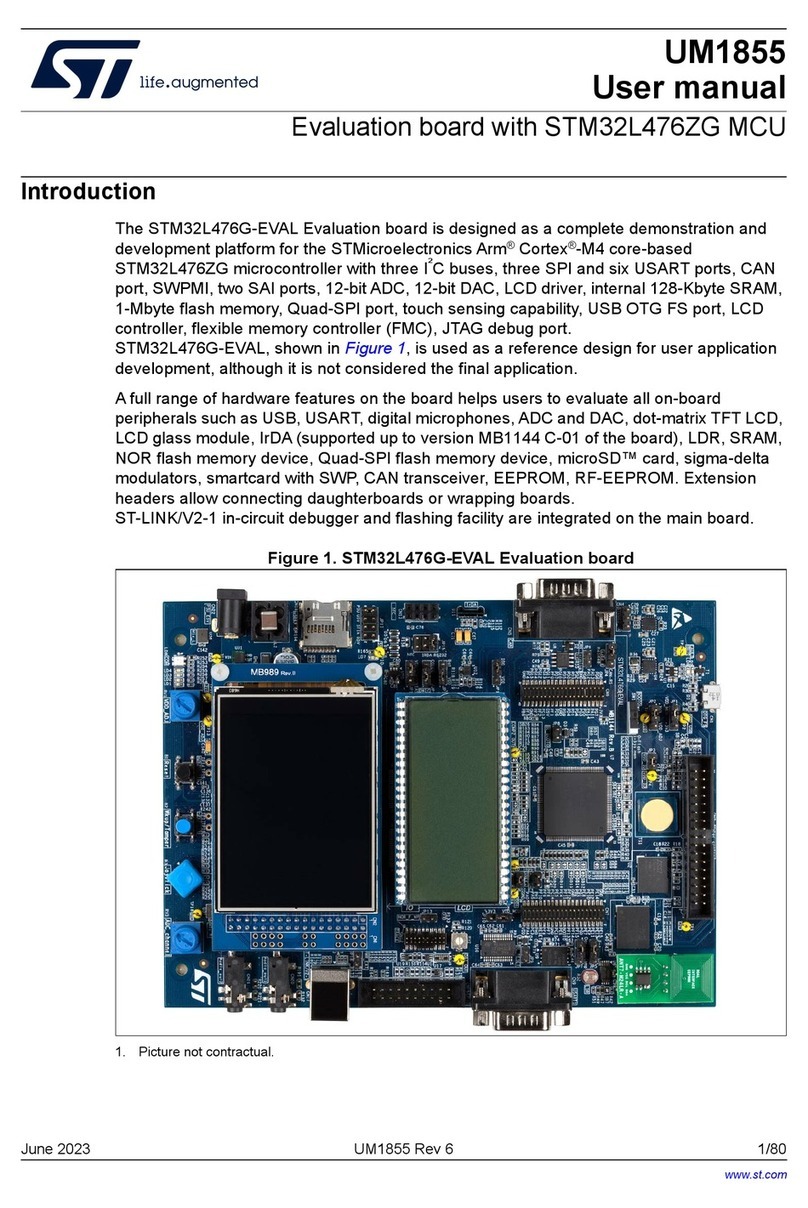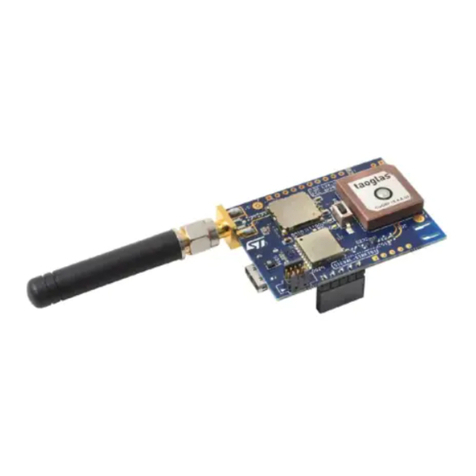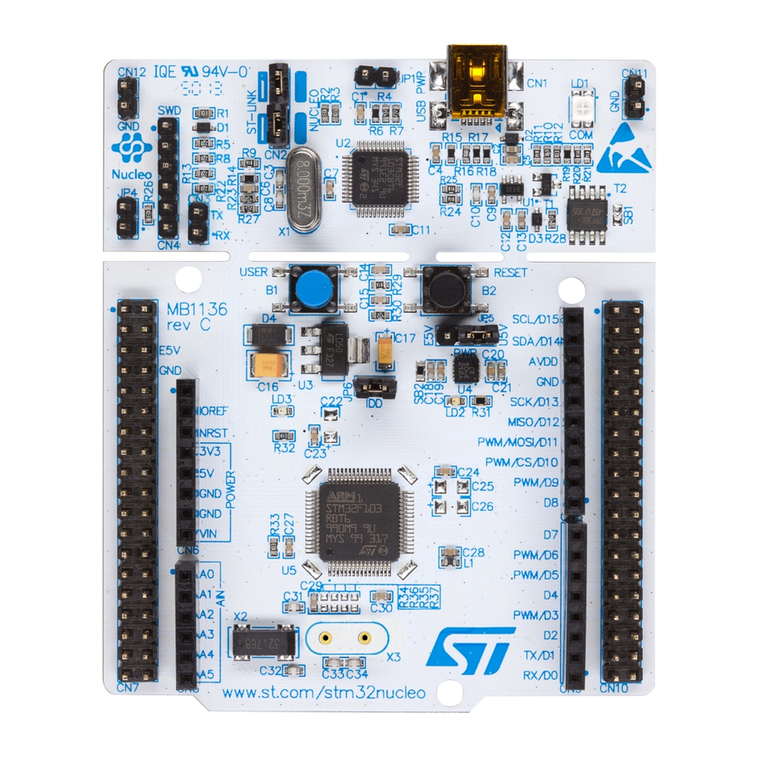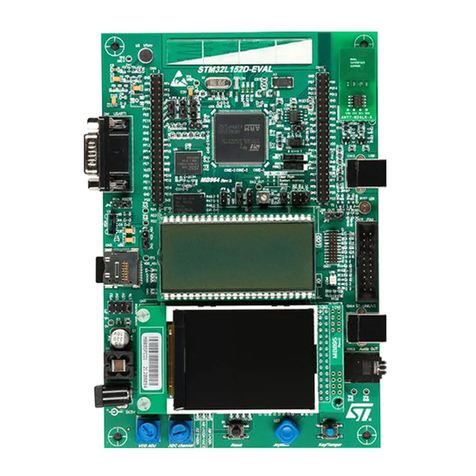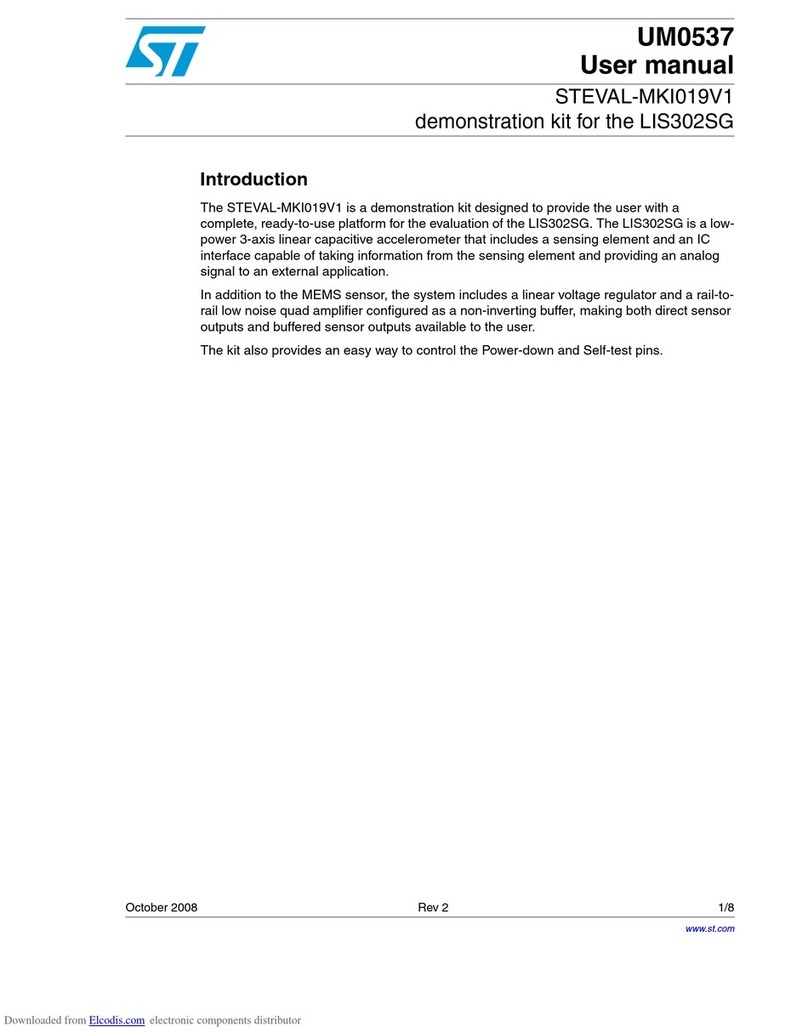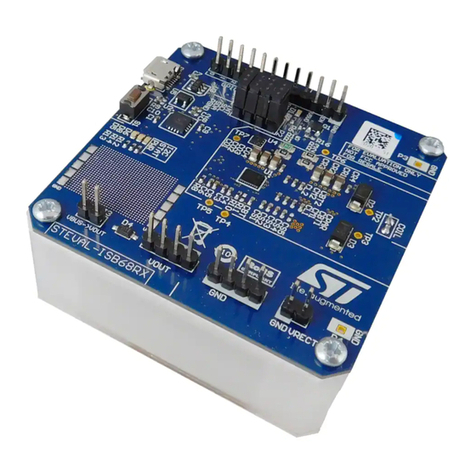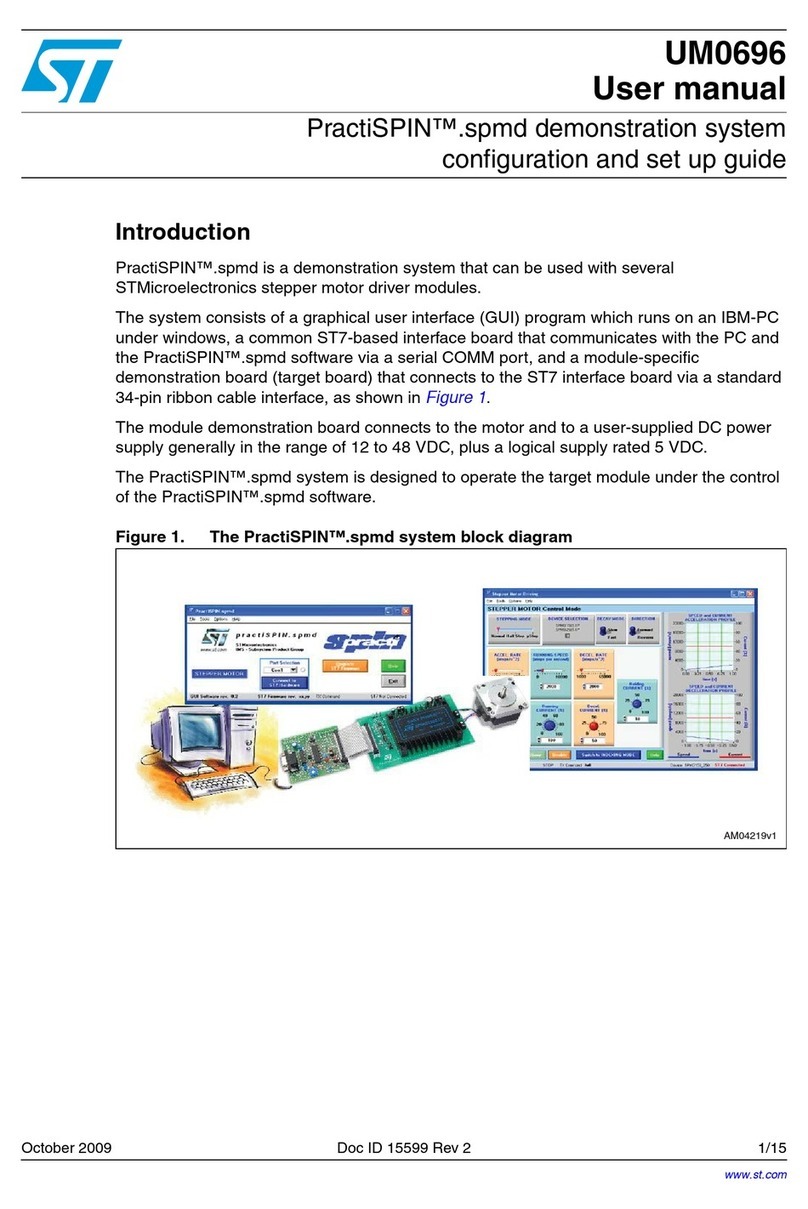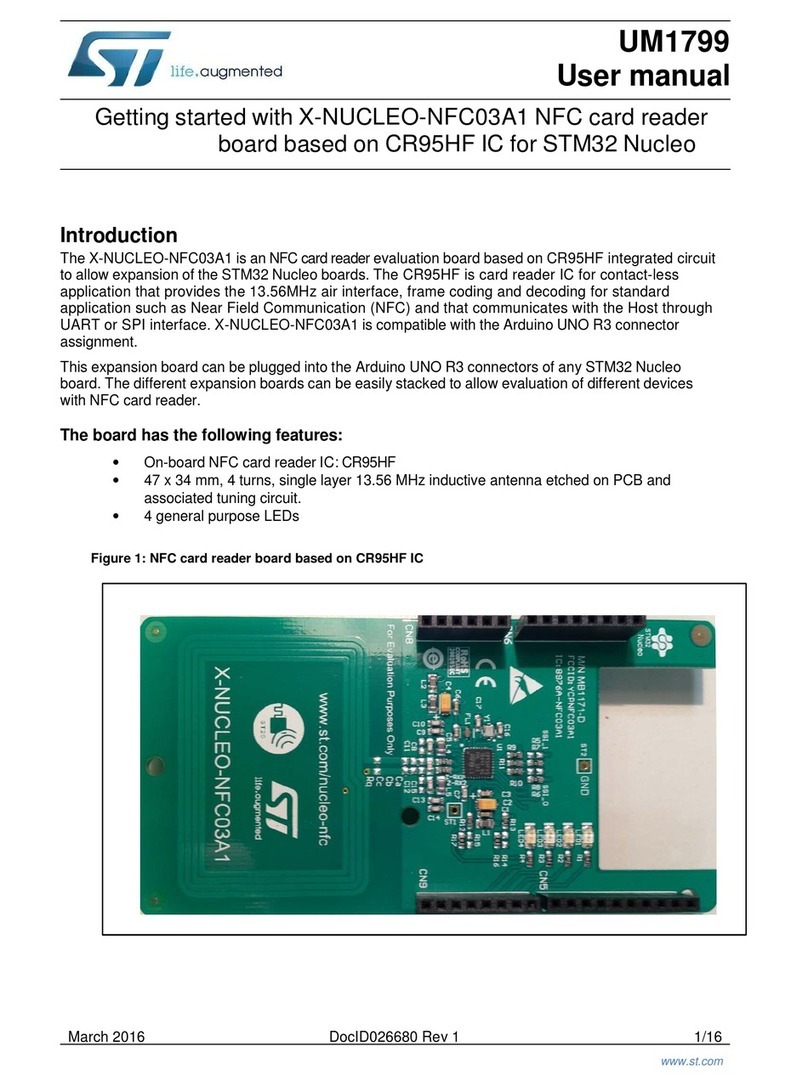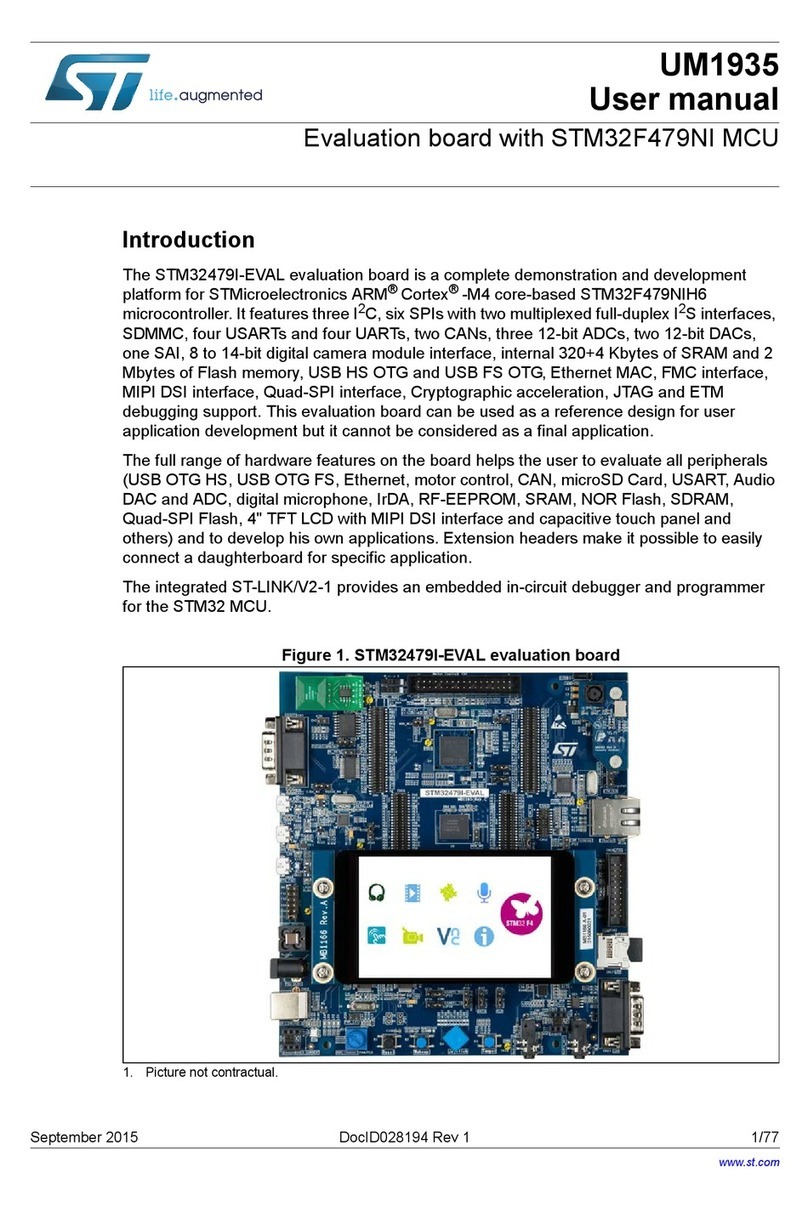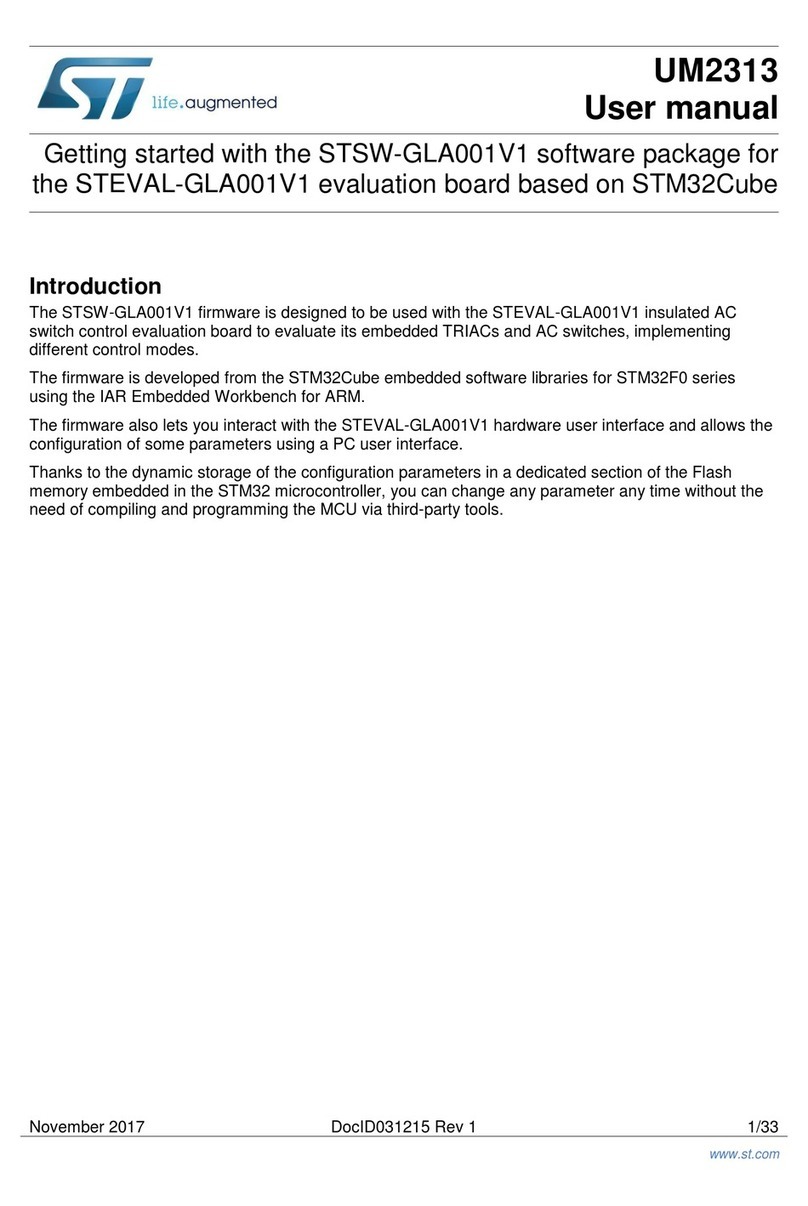
Introduction
The STEVAL-QUADV01 evaluation board features four different step-down regulators.
The board provides four different means of providing an output voltage of 5 V. The output voltages can be easily set to other
values by changing the resistors in resistive dividers of the feedback networks.
The evaluation board is based on the L6981, L7983, and ST1PS03 synchronous step-down converters. It also features the
ST730 LDO, which offers various benefits for voltage conversion from multiple input levels.
The L6981 synchronous monolithic step-down regulator is capable of delivering up to 1.5 A DC. Its wide input voltage range
makes the device suitable for a broad range of applications. The device implements peak current mode architecture in an SO 8L
package with internal compensation to minimize design complexity and size. The L6981 is available in low consumption mode
(LCM) and low noise mode (LNM) versions. LCM maximizes efficiency at light load with controlled output voltage ripple, making
the device extremely suitable for battery-powered applications. LNM makes the switching frequency constant and minimizes the
output voltage ripple overload current range, meeting the specifications for noise sensitive applications. The EN pin manages
the enable/disable function. The typical shutdown current is 2 μA when disabled. When the EN pin is pulled up, the device
is enabled and the internal 1.3 ms soft-start takes place. Pulse-by-pulse current sensing on both power elements implements
effective constant current protection while thermal shutdown prevents thermal run-away.
The L7983 regulator is a step-down monolithic switching regulator that can deliver up to 300 mA DC, based on peak current
mode architecture. The wide input voltage range and adjustable UVLO threshold meet the specification for 12 V, 24 V, and 48
V industrial bus standards. The selected switching frequency is 1 MHz. It can be adjusted by applying an external clock on
the LNM/LCM pin or by changing the frequency programming resistor. L7983 supports dynamic low consumption mode (LCM)
to low noise mode (LNM) transition. LCM is designed for applications with active idle mode to maximize the efficiency at light
load with controlled output voltage ripple, while LNM keeps the switching frequency constant over the load current range for
low noise applications. The soft start time is internally fixed and the output voltage supervisor manages the reset phase for any
digital load (MCU, FPGA, etc.). The internal compensation network features high noise immunity, simple design, and component
cost savings. The RST open collector output can also implement output voltage sequencing during the power-up phase. The
synchronous rectification, designed for high efficiency at medium to heavy loads, and the high switching frequency capability
contribute to size reduction in final application designs. Pulse-by-pulse current sensing on both power elements implements
effective constant current protection.
The ST1PS03 is a step-down converter able to deliver up to 400 mA output current from a 1.8 to 5.5 V input, with a 1.6 to
3.3 V dynamically adjustable output voltage. The board features the ST1PS03AQTR nano-quiescent miniaturized synchronous
step-down converter, which implements enhanced peak current control (PCC) and advanced design circuitry to minimize
quiescent current. The device embeds a controlled load switch to supply a subsystem with VIN_AUX voltage rail. The design
demonstrates how high efficient conversion can be achieved thanks to the ST1PS03AQTR (in a thin TQFN12 package of
2.0x1.7 mm), a 2.2 μH inductor, and two small capacitors.
The ST730 is a low-quiescence medium input voltage (28 V) LDO able to deliver up to 300 mA output current from a 2.5 V to 28
V input. Thanks to its low quiescence, it is suitable in always-on applications. The ST730 features an SOA-type protection that
clamps the output current to a safe value in case of overload or short-circuit.
All regulators feature thermal protections that disable the device in case it reaches critical temperatures that might damage the
devices.
You can use the eDesignSuite and eDSim software tools to simulate and configure the L6981, L7983, and ST1PS03 buck
converters before verifying the simulation results on the evaluation board.
Getting started with the STEVAL-QUADV01 evaluation board based on L6981,
L7983 and ST1PS03 DC-DC converter buck regulators, and ST730 LDO
UM3114
User manual
UM3114 - Rev 1 - April 2023
For further information contact your local STMicroelectronics sales office. www.st.com
